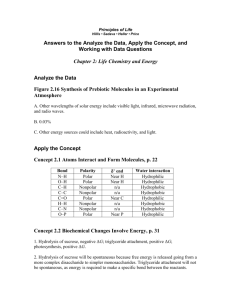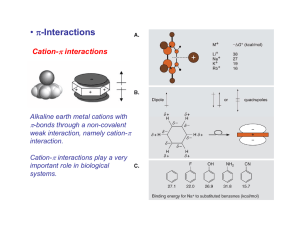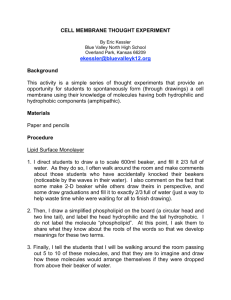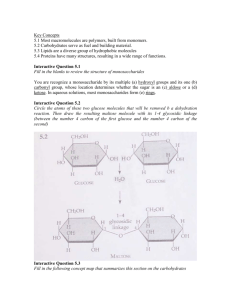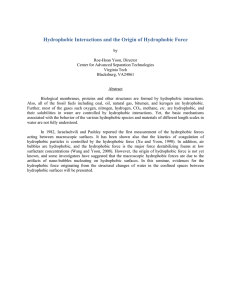The hydrophobic effect is the property that non-polar molecules tend... like molecules in water and analogous intramolecular interactions. The name...
advertisement
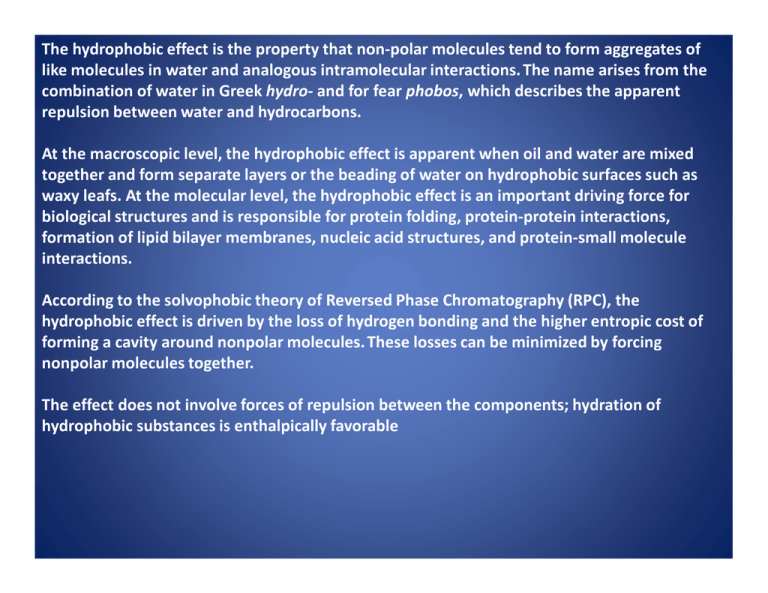
The hydrophobic effect is the property that non-polar molecules tend to form aggregates of like molecules in water and analogous intramolecular interactions. The name arises from the combination of water in Greek hydro- and for fear phobos, which describes the apparent repulsion between water and hydrocarbons. At the macroscopic level, the hydrophobic effect is apparent when oil and water are mixed together and form separate layers or the beading of water on hydrophobic surfaces such as waxy leafs. At the molecular level, the hydrophobic effect is an important driving force for biological structures and is responsible for protein folding, protein-protein interactions, formation of lipid bilayer membranes, nucleic acid structures, and protein-small molecule interactions. According to the solvophobic theory of Reversed Phase Chromatography (RPC), the hydrophobic effect is driven by the loss of hydrogen bonding and the higher entropic cost of forming a cavity around nonpolar molecules. These losses can be minimized by forcing nonpolar molecules together. The effect does not involve forces of repulsion between the components; hydration of hydrophobic substances is enthalpically favorable Hydrophobic bonds are formed between non-polar hydrocarbon groups on the drug and those in the receptor site. These bonds are not very specific but the interactions do occur to exclude water molecules.
